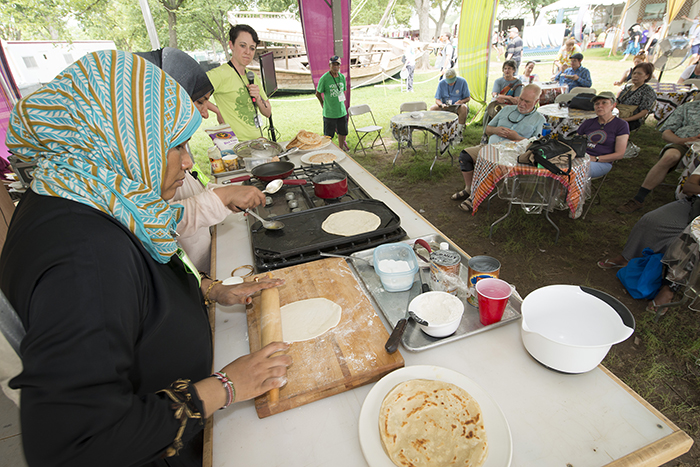Recipe from Kenya: Chapati

After the close of the Folklife Festival’s first weekend, the chefs of the Flavors of Kenya stage have shown our visitors a wide variety of both traditional and modern Kenyan dishes.
One dish that exemplifies the international influences in today’s Kenya culture is Alice and Emily Oduor’s recipe for chapati. While this type of flatbread is traditionally associated with other cuisines, such as Indian and Pakistani, it has been adopted into Kenyan cooking and can now be found complementing many dishes.
Most commonly, chapati is served with either beef or chicken stew, and it is also very common to pair the bread with a hot cup of tea. Because the preparation is relatively simple, children of all ages are able to learn how to cook this popular dish— making it a great recipe for families to try in their own homes!
Ingredients (makes about 6 chapatis)
2 cups wheat flour
1-2 spoons vegetable oil
Salt
1 cup water (luke warm)
Preparation
- Pour flour in a bowl. Separately, add a pinch of salt into 1 cup of water.
- Add the cup of salted water into the bowl of flour and mix thoroughly with your hands until the dough becomes soft and smooth.
- Add a spoon or two of cooking vegetable oil to the dough and mix again.
- Leave the dough to rest and relax.
- Roll the dough into spiral circles to your desired size.
- Leave it to rest again for 5-10 minutes.
- Roll the circles of dough, then fry in a hot pan, adding a little vegetable oil to the pan. Allow each side to cook for about 1 minute.
Michaela Wright is a production intern for the Folklife Festival.

